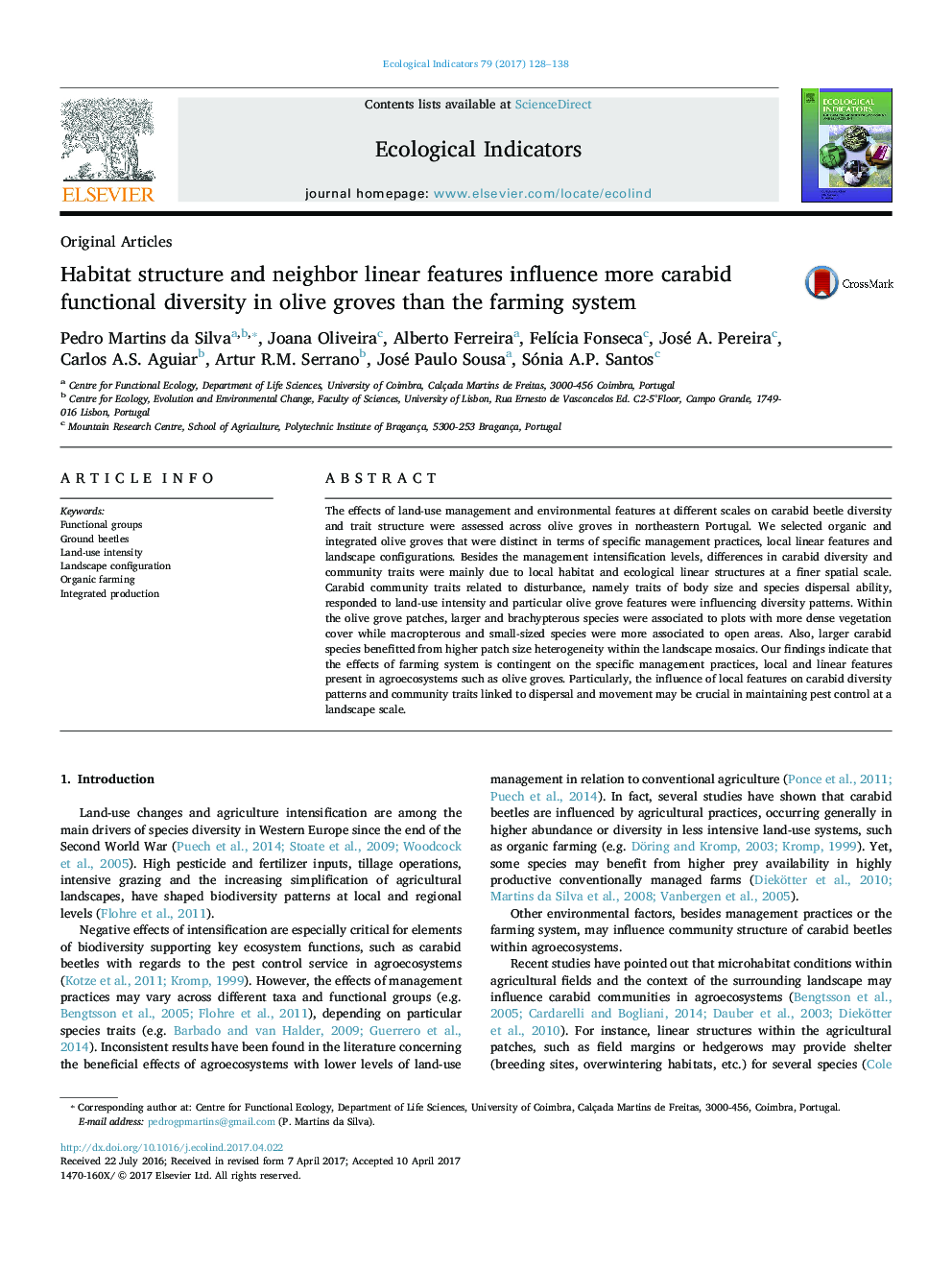| Article ID | Journal | Published Year | Pages | File Type |
|---|---|---|---|---|
| 5741761 | Ecological Indicators | 2017 | 11 Pages |
â¢Effects of management, landscape and local features were tested on carabid beetles.â¢Organic and integrated olive groves did not differ in carabid functional diversity.â¢Land-use intensification and fine-scale features explained carabid community traits.â¢Larger and poorer disperser species preferred closed habitats within olive patches.â¢Small-scale configuration of olive grove is important for biodiversity conservation.
The effects of land-use management and environmental features at different scales on carabid beetle diversity and trait structure were assessed across olive groves in northeastern Portugal. We selected organic and integrated olive groves that were distinct in terms of specific management practices, local linear features and landscape configurations. Besides the management intensification levels, differences in carabid diversity and community traits were mainly due to local habitat and ecological linear structures at a finer spatial scale. Carabid community traits related to disturbance, namely traits of body size and species dispersal ability, responded to land-use intensity and particular olive grove features were influencing diversity patterns. Within the olive grove patches, larger and brachypterous species were associated to plots with more dense vegetation cover while macropterous and small-sized species were more associated to open areas. Also, larger carabid species benefitted from higher patch size heterogeneity within the landscape mosaics. Our findings indicate that the effects of farming system is contingent on the specific management practices, local and linear features present in agroecosystems such as olive groves. Particularly, the influence of local features on carabid diversity patterns and community traits linked to dispersal and movement may be crucial in maintaining pest control at a landscape scale.
